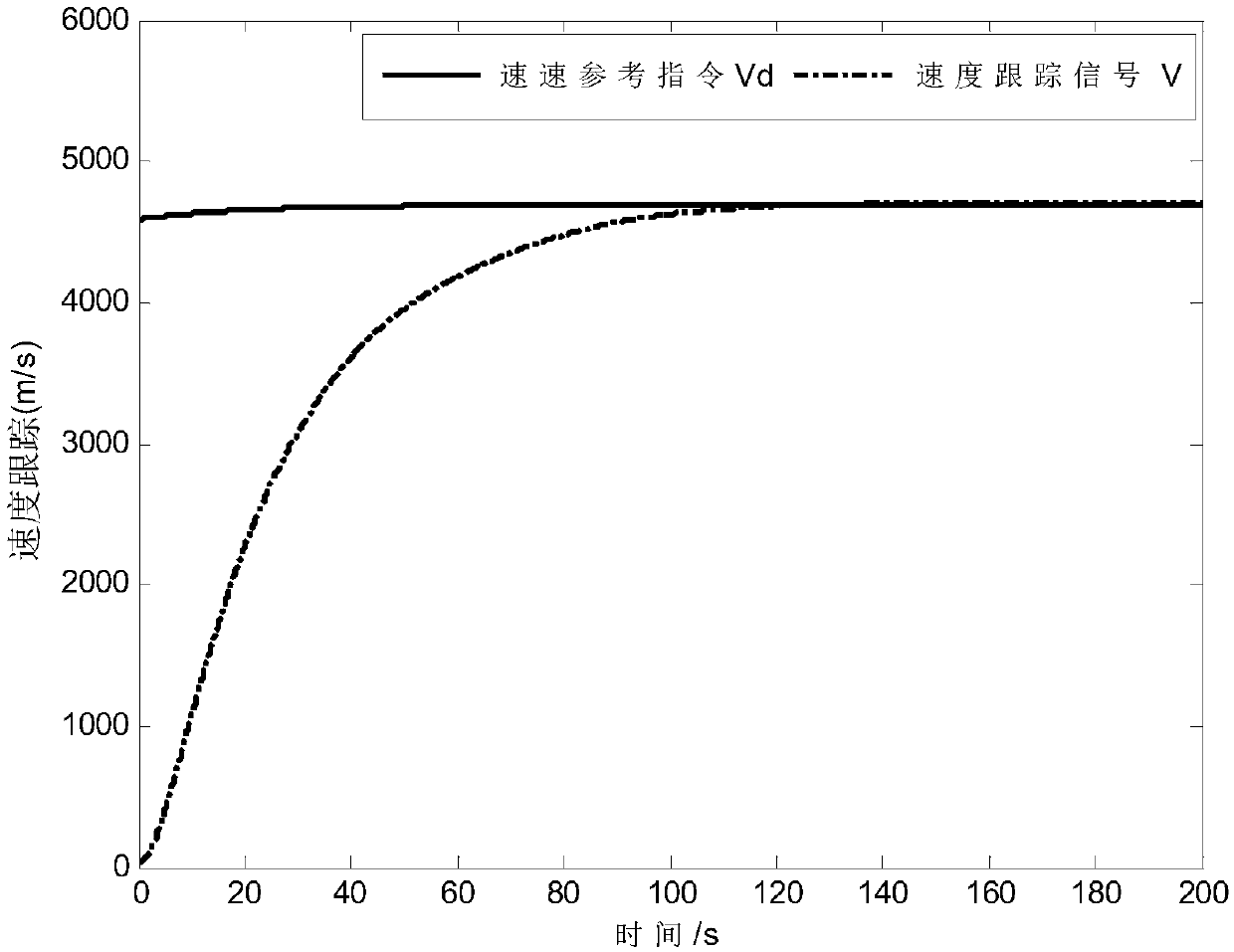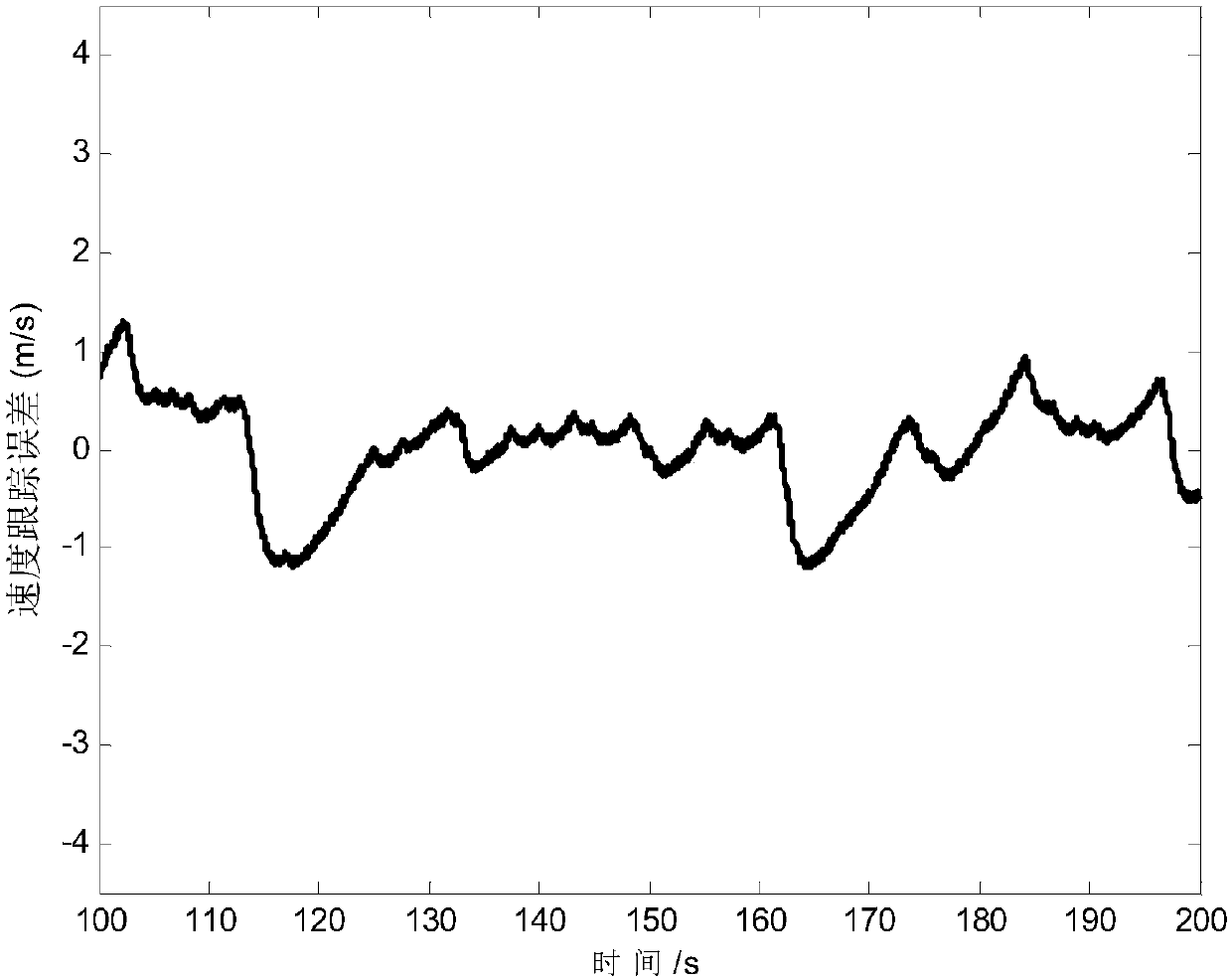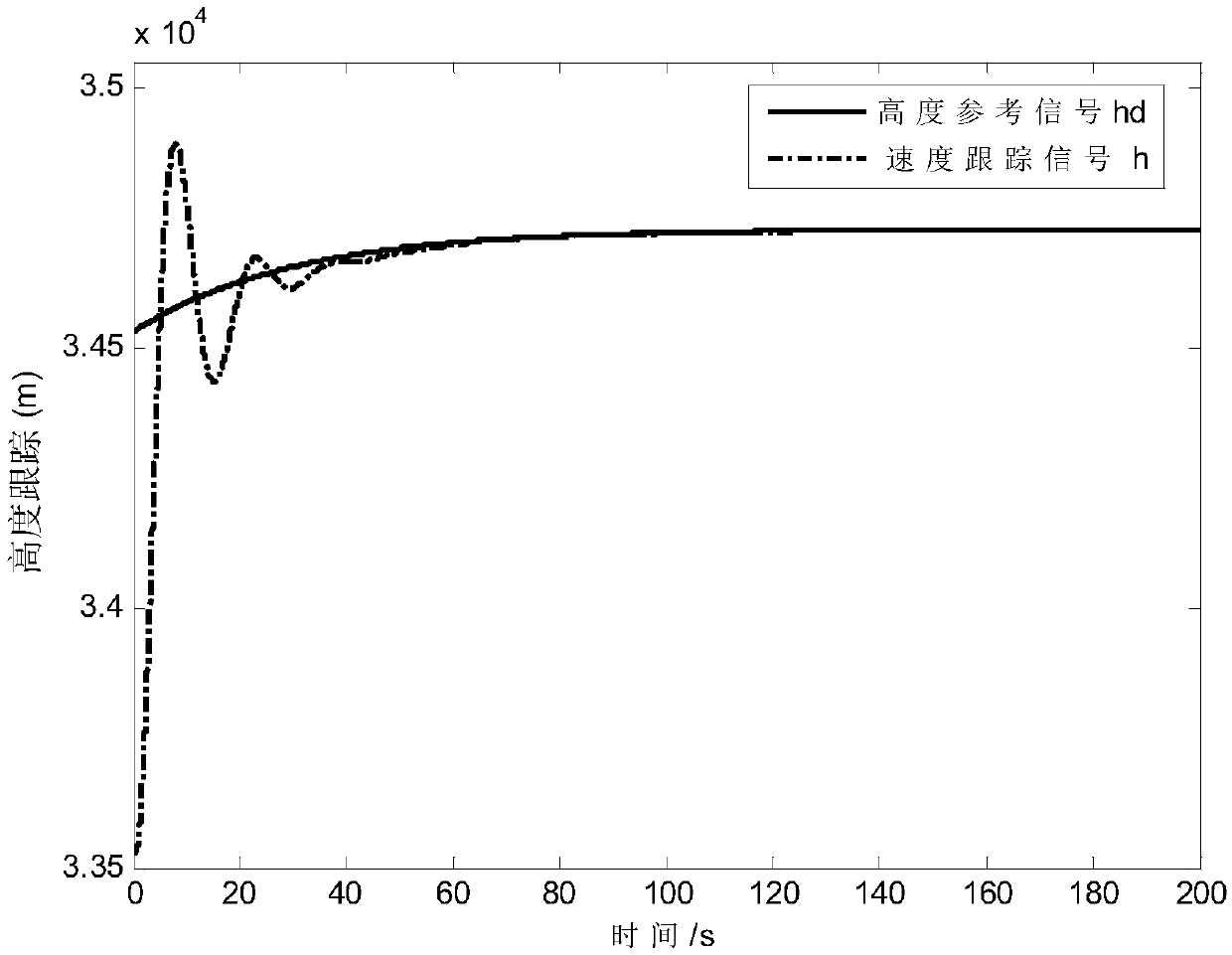Hypersonic aircraft robust tracking control method based on terminal sliding mode
A hypersonic, terminal sliding mode technology, applied in the direction of adaptive control, general control system, control/regulation system, etc., can solve the problems of poor robustness, complex control model, and no consideration of the limited input of the controller, etc., to achieve fast The effect of convergence speed
- Summary
- Abstract
- Description
- Claims
- Application Information
AI Technical Summary
Problems solved by technology
Method used
Image
Examples
specific Embodiment approach 1
[0046] Specific embodiment one: a hypersonic vehicle robust tracking control method based on terminal sliding mode comprises the following steps:
[0047] Hypersonic Vehicle Failure Model
[0048] In order to facilitate the design of the hypersonic vehicle control system and the design of the controller, the input-output linearization method is used to deal with the nonlinear system model, using the literature (Sun H, Li S, Sun C. Finite time integral sliding mode control of hypersonic vehicles[ J].Nonlinear Dynamics,2013,73(1-2):229-244.) System model after feedback linearization.
[0049]
[0050] where φ c and δ e is the control input, f v , f h , b 11 , b 12 , b 21 and b 22 For specific definitions, see literature (Sun H, Li S, Sun C. Finite time integral sliding mode control of hypersonic vehicles [J]. Nonlinear Dynamics, 2013, 73(1-2): 229-244.).
[0051] remember The formula: (1) can be rewritten as:
[0052]
[0053] Among them, Δf v , Δf h , Δb 11...
specific Embodiment approach 2
[0244] Specific embodiment two: the difference between this embodiment and specific embodiment one is: the specific process of using the terminal sliding mode theory and adaptive method to design the terminal sliding mode surface in the step one is:
[0245] Actuator input saturation is an important factor affecting the tracking control effect of a hypersonic vehicle, and may even lead to system instability. In order to deal with the problem of actuator input saturation, hyperbolic tangent function and auxiliary system are introduced to design an adaptive fast terminal sliding mode controller with anti-saturation.
[0246] The design sliding surface s is:
[0247] s = σ 2 +α 1 σ 1 +α 2 f(σ 1 )
[0248] where α 1 and alpha 2 is the design parameter of the sliding surface, f(σ 1 ) for σ 1 is a piecewise function of the independent variable;
[0249]
[0250] where r 1 、r 2 , γ, η are the design parameters of the sliding surface, sign(σ 1 ) is a sign function, si...
specific Embodiment approach 3
[0255] Specific embodiment three: the difference between this embodiment and specific embodiment one or two is: in the step two, according to the terminal sliding mode surface designed in step one, the specific process of designing the terminal sliding mode controller u of the hypersonic vehicle is:
[0256] The derivative of the sliding mode surface s is obtained according to the following formula and the sliding mode surface s
[0257]
[0258]
[0259] in for σ 1 derivative of for σ 2 The derivative of , d is the disturbance of the system (80) (formula (80)), B is the control gain matrix, F is the intermediate function, v is the control input, is f(σ 1 ) derivative;
[0260]
[0261]
[0262] B=-b
[0263]
[0264]
[0265] in is the third derivative of the reference speed signal, is the fourth derivative of the reference height, f V is a nonlinear function with the speed of the hypersonic vehicle as an independent variable, f h is a nonli...
PUM
 Login to View More
Login to View More Abstract
Description
Claims
Application Information
 Login to View More
Login to View More - R&D
- Intellectual Property
- Life Sciences
- Materials
- Tech Scout
- Unparalleled Data Quality
- Higher Quality Content
- 60% Fewer Hallucinations
Browse by: Latest US Patents, China's latest patents, Technical Efficacy Thesaurus, Application Domain, Technology Topic, Popular Technical Reports.
© 2025 PatSnap. All rights reserved.Legal|Privacy policy|Modern Slavery Act Transparency Statement|Sitemap|About US| Contact US: help@patsnap.com



